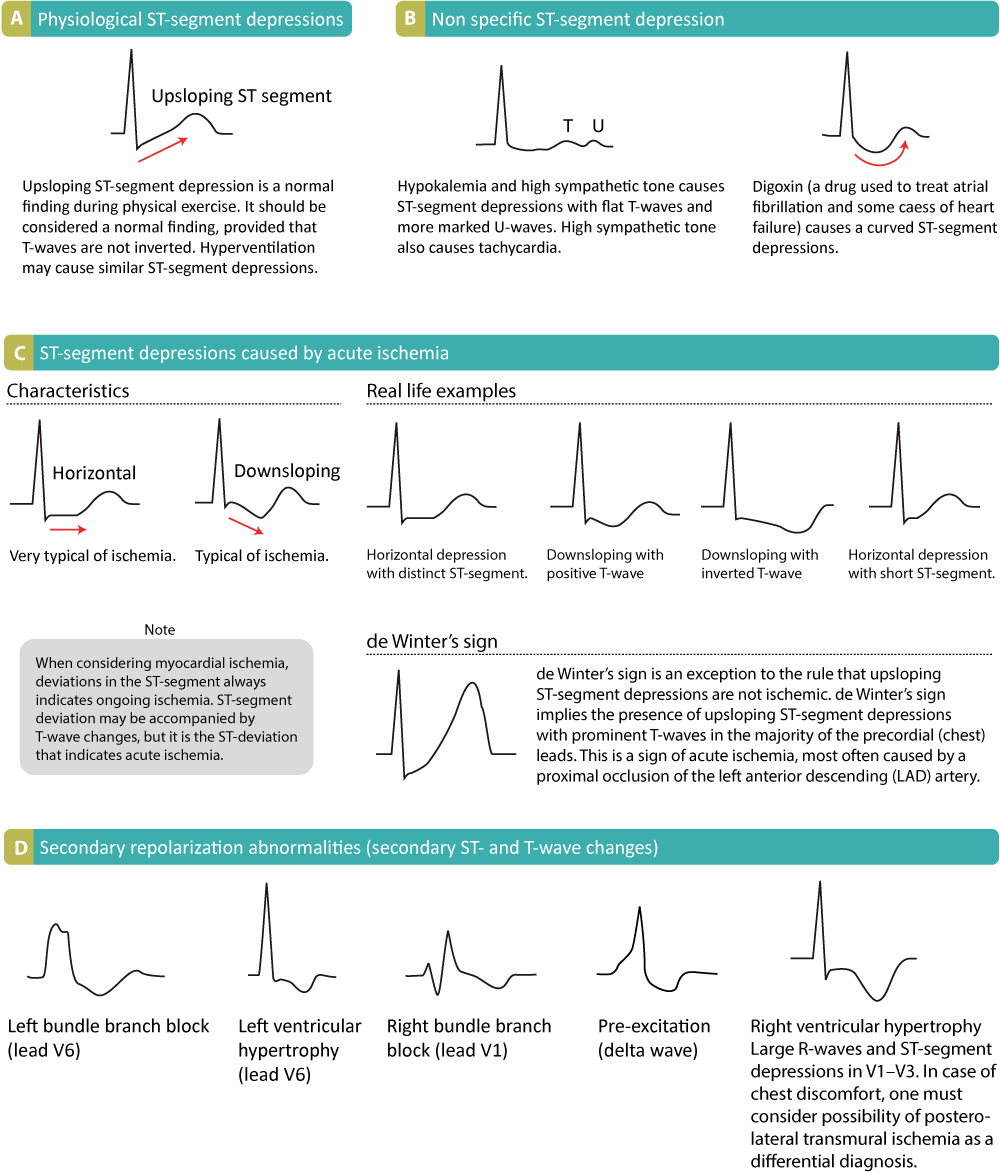In normal ecg readings the t wave should be upward.
Inverted t wave on ecg causes.
Inverted t waves mean on an ecg that you should go for further testing.
Inverted t waves associated with cardiac signs and symptoms chest pain and cardiac murmur are highly suggestive of myocardial ischaemia.
For example inverted t wave seen in v1 and v2 section also occur in normal individual.
The t wave is normally upright in leads i ii and v3 to v6.
Otherwise there is discordance opposite directions of qrs and t which might be due to pathology.
If the readings show different characteristics then you have inverted t waves.
The t wave should be concordant with the qrs complex meaning that a net positive qrs complex should be followed by a positive t wave and vice versa figure 17.
A negative t wave is also called an inverted t wave.
In general an inverted t wave in a single lead in one anatomic segment ie inferior lateral or anterior is unlikely to represent acute pathology.
The interpretation of the ecg in the context of the individual patient presentation is mandatory.
The t wave is the ecg manifestation of ventricular repolarization of the cardiac electrical cycle.
Causes of t wave abnormality on ecg.
For instance a single inverted t wave in either lead iii or avf can be a normal variant.
It is usually an upward curve that is followed by a rapid dip.
Inverted in lead avr.
And variable in leads iii avl avf v1 and v2.
Inverted t wave is considered abnormal if inversion is deeper than 1 0 mm.
Thus t wave inversions in leads v1 and v2 may be fully normal.
Inverted t waves found in leads other than the v1 to v4 leads is associated with increased cardiac deaths.
Here are some of the most common reasons for inverted t waves.

